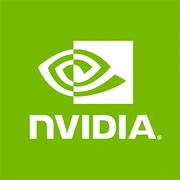NVIDIA GeForce RTX 4060

NVIDIA GeForce RTX 4060: Power for Gamers and Creators in a Compact Format
Architecture and Key Features
The NVIDIA GeForce RTX 4060 graphics card is based on the Ada Lovelace architecture, which represents an evolutionary step after Ampere. The TSMC 4N process (5 nm class) provides increased transistor density and energy efficiency. Among the key innovations are:
- Third-Generation RT Cores: Accelerate ray tracing, making light, shadows, and reflections in games more realistic.
- Fourth-Generation Tensor Cores: Responsible for the operation of DLSS 3, which not only increases resolution but also generates whole frames, boosting FPS.
- Shader Execution Reordering (SER): Optimizes task execution, reducing latency and improving performance in ray-traced scenes.
Support for DLSS 3.5 (with enhanced ray tracing through Ray Reconstruction) and AMD's FidelityFX Super Resolution (via open standards) makes the card versatile for various games.
Memory: Speed and Capacity
The RTX 4060 is equipped with 8 GB GDDR6 and a 128-bit bus width. The bandwidth reaches 272 GB/s, which is lower than that of the RTX 4060 Ti (288 GB/s) but sufficient for 1080p and 1440p. However, in games with ultra textures or 4K, there may be a lack of VRAM—such as in Hogwarts Legacy or The Last of Us Part I at maximum settings.
For most modern projects, 8 GB is adequate, but enthusiasts might consider the RTX 4070 with 12 GB if the budget allows.
Gaming Performance: FPS and Resolutions
At 1080p, the RTX 4060 shows solid results:
- Cyberpunk 2077 (Ultra, no RT/DLSS): 65-70 FPS;
- Elden Ring (Max): 80-85 FPS;
- Call of Duty: Warzone (Ultra): 110-120 FPS.
With DLSS 3 enabled in supported games (such as Alan Wake 2), FPS increases by 40-60%, and in Cyberpunk 2077 with ray tracing and DLSS, the card delivers stable 90 FPS.
For 1440p (2560x1440), the RTX 4060 is conditionally suitable: in Horizon Forbidden West (High) — 55-60 FPS, but with the DLSS Quality mode — up to 75 FPS. In 4K (3840x2160) without DLSS, the card is uncomfortable: Red Dead Redemption 2 barely holds 30 FPS on Ultra.
Conclusion: An ideal choice for 1080p gaming with RT and DLSS, but with caveats for 1440p.
Professional Tasks: Not Just Gaming
Thanks to CUDA cores (3072 total) and support for OpenCL, the RTX 4060 handles:
- Video Editing: In DaVinci Resolve, rendering a 4K project takes 20% less time than with the RTX 3060.
- 3D Rendering: In Blender (Cycles), the card processes the BMW scene in about 4 minutes compared to ~5.5 minutes for the RTX 3060.
- Scientific Calculations: Bioinformatics and ML tasks are accelerated through CUDA and optimized libraries.
NVENC (seventh-generation encoder) ensures smooth streaming in OBS without burdening the CPU.
Power Consumption and Heat Dissipation
The TDP of the RTX 4060 is 115 W, which is 35% lower than the RTX 3060 (170 W). This allows the card to be used even in compact builds.
- Cooling: Reference models use two fans (temperature under load — ~65°C). For cases with poor ventilation, it’s better to choose options with triple cooling (for example, from ASUS Dual or MSI Ventus).
- Cases: A case with 2-3 fans is minimally sufficient. A Mesh design is recommended (for instance, Fractal Design Pop Air).
Comparison with Competitors
The main competitor is the AMD Radeon RX 7600 (8 GB GDDR6):
- In DX12 games (Shadow of the Tomb Raider), the RTX 4060 is 15-20% faster;
- With ray tracing enabled, the gap increases to 30-40% in favor of NVIDIA thanks to DLSS 3;
- However, in DX11 projects (Assassin’s Creed Valhalla), the RX 7600 sometimes wins due to AMD optimization.
For those concerned about price, the RX 7600 is about 10% cheaper, but the RTX 4060 offers better support for ray tracing and AI technologies.
Practical Tips
- Power Supply: A 450-500 W PSU is sufficient (Bronze 80+ recommended). For systems with Ryzen 7/i5 and RTX 4060, Corsair CX550 will suffice.
- Compatibility: PCIe 4.0 x8 (backward compatible with PCIe 3.0, but with a performance loss of 1-3%).
- Drivers: Use Studio Driver for professional applications and Game Ready for gaming. Periodically update software through GeForce Experience.
Pros and Cons
Pros:
- High energy efficiency;
- DLSS 3 and superiority in RT scenes;
- AV1 support for streamers;
- Low heat and noise levels.
Cons:
- Only 8 GB VRAM (limits in 4K and some 1440p scenarios);
- Narrow 128-bit bus;
- Higher price compared to direct AMD competitors.
Final Conclusion: Who is the RTX 4060 For?
This graphics card is an excellent choice for:
- Gamers playing at 1080p with ultra settings and RT;
- Streamers who value NVENC and low power consumption;
- Editors and designers working with rendering under moderate loads.
If you are not chasing 4K and want modern technology without overpaying for top models, the RTX 4060 will be a balanced solution. However, for future-proofing—especially considering the increasing demands for VRAM—it is worth considering the RTX 4070 or RX 7700 XT.
Basic
Memory Specifications
Theoretical Performance
Miscellaneous
Benchmarks
Compared to Other GPU
Related GPU Comparisons
Share in social media
Or Link To Us
<a href="https://cputronic.com/gpu/nvidia-geforce-rtx-4060" target="_blank">NVIDIA GeForce RTX 4060</a>
